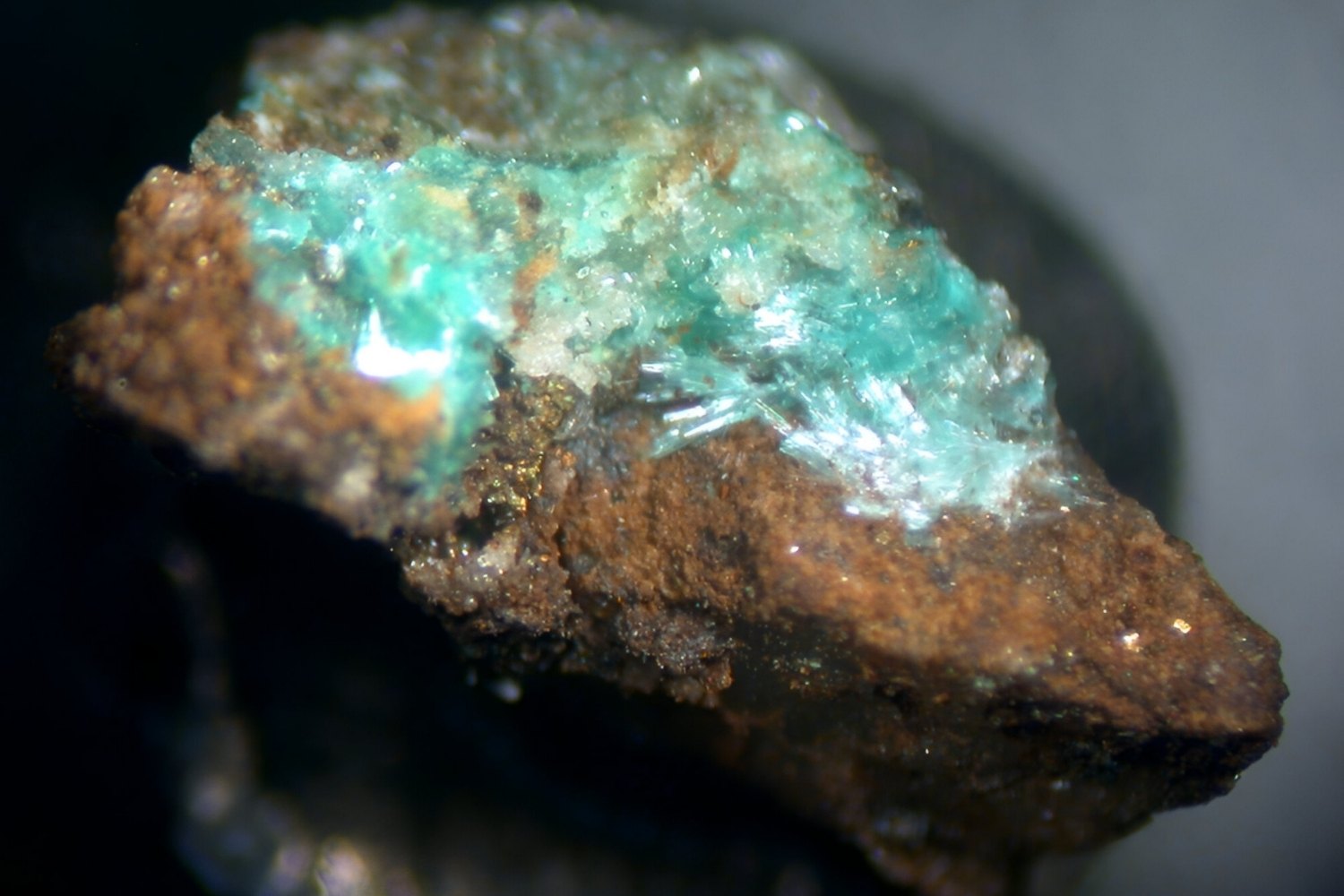
What is Campigliaite? This rare mineral, named after Campiglia Marittima in Italy, is a hidden gem in the world of geology. Campigliaite is a copper sulfate mineral with a striking blue hue, often found in the oxidized zones of copper deposits. It forms in tiny, delicate crystals that can be easily overlooked by the untrained eye. Despite its rarity, this mineral has fascinated collectors and scientists alike due to its unique properties and formation process. In this blog post, we'll uncover 25 intriguing facts about Campigliaite, shedding light on its origins, characteristics, and significance in the mineral world. Get ready to dive into the captivating story of this elusive mineral!
Key Takeaways:
- Campigliaite is a rare, striking blue mineral found in Italy and other countries. It has unique properties like solubility in water and fluorescence under UV light, making it a fascinating subject for geology students and mineral collectors.
- With its vibrant blue color and unique properties, Campigliaite is a sought-after mineral for collectors and researchers. It can be used in jewelry, studied in educational settings, and has potential applications in environmental science.
What is Campigliaite?
Campigliaite is a rare mineral that fascinates geologists and mineral enthusiasts alike. Its unique properties and limited occurrence make it a subject of great interest. Let's dive into some intriguing facts about this mineral.
-
Campigliaite was first discovered in Italy. Specifically, it was found in the Campiglia Marittima region of Tuscany, which is how it got its name.
-
It belongs to the sulfate mineral group. Sulfate minerals contain sulfur and oxygen, and Campigliaite is no exception.
-
The mineral has a striking blue color. This vibrant hue makes it easily recognizable and highly sought after by collectors.
-
Campigliaite forms in oxidized zones of copper deposits. These environments provide the perfect conditions for its formation.
-
It has a monoclinic crystal system. This means its crystal structure is shaped like a skewed rectangle, which is quite unique.
-
The mineral is relatively soft. With a Mohs hardness of just 2.5, it can be easily scratched by harder substances.
-
Campigliaite is often found in association with other minerals. These include brochantite, langite, and posnjakite, among others.
-
It has a vitreous luster. This gives it a glass-like appearance, adding to its visual appeal.
-
The mineral is transparent to translucent. Light can pass through it, making it even more attractive.
-
Campigliaite is not radioactive. This makes it safe to handle and collect.
Where Can You Find Campigliaite?
Finding Campigliaite can be quite a challenge due to its rarity. However, there are specific locations where it has been discovered.
-
Italy remains the primary source. The Campiglia Marittima region is still the most well-known location for this mineral.
-
It has also been found in the USA. Specifically, in the state of Arizona, which is known for its rich mineral deposits.
-
Other European countries have reported findings. These include Germany and Austria, although in much smaller quantities.
-
Australia is another location. Some deposits have been found in the Broken Hill region.
-
It can also be found in museum collections. Many museums around the world have samples of Campigliaite on display.
Unique Properties of Campigliaite
Campigliaite has several unique properties that set it apart from other minerals.
-
It has a specific gravity of 3.1. This makes it denser than many other minerals.
-
The mineral exhibits pleochroism. This means it can show different colors when viewed from different angles.
-
It is soluble in water. This is a rare property for a mineral, making it quite unique.
-
Campigliaite can fluoresce under UV light. This makes it glow, adding to its allure.
-
It has a perfect cleavage. This means it can split easily along certain planes.
Uses and Applications of Campigliaite
While Campigliaite is not widely used in industry, it has some interesting applications.
-
It is primarily a collector's item. Its rarity and beauty make it highly desirable for mineral collectors.
-
Used in educational settings. Geology students often study it to understand sulfate minerals better.
-
It can be used in jewelry. Although rare, some jewelers use it to create unique pieces.
-
Campigliaite is studied for its chemical properties. Researchers analyze it to learn more about sulfate minerals.
-
It has potential in environmental science. Its formation process can provide insights into oxidized zones in copper deposits.
The Final Word on Campigliaite
Campigliaite, a rare and captivating mineral, holds a unique place in the world of geology. Found primarily in Tuscany, Italy, this mineral's striking blue color and intricate crystal structure make it a favorite among collectors and scientists alike. Its composition, mainly copper sulfate, gives it distinct properties that are both fascinating and valuable for research.
Understanding campigliaite's formation and characteristics not only enriches our knowledge of mineralogy but also highlights the incredible diversity of Earth's natural treasures. Whether you're a seasoned geologist or just someone with a curiosity for the natural world, campigliaite offers a glimpse into the complex and beautiful processes that shape our planet.
So next time you come across a piece of campigliaite, remember the rich history and scientific significance it carries. This rare gem truly embodies the wonders of Earth's geological marvels.
Frequently Asked Questions
Was this page helpful?
Our commitment to delivering trustworthy and engaging content is at the heart of what we do. Each fact on our site is contributed by real users like you, bringing a wealth of diverse insights and information. To ensure the highest standards of accuracy and reliability, our dedicated editors meticulously review each submission. This process guarantees that the facts we share are not only fascinating but also credible. Trust in our commitment to quality and authenticity as you explore and learn with us.


